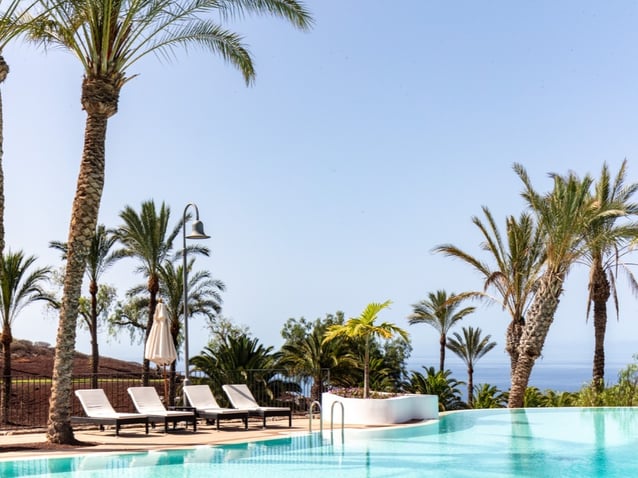
For those who have the privilege of enjoying Abama Resort year-round, every day is an opportunity to don your explorer’s backpack and take Tenerife day trips. Living in this heavenly corner of the world opens doors not only to exclusive golf courses and sport facilities but also to an infinite number of Canary Island cultural activities that reveal more about its people and traditions. Today we propose an excursion that will envelop you in rich and varied Tenerifan folklore through one of its most popular traditional dances: the tajaraste.
Before we introduce you to the dance itself, we have to take a step back. Traditional Canary Island music is the fruit of various cultural influences: European and North American touches mixed with the aboriginal rhythms that have been collected and preserved throughout history. While still keeping the traditional alive, Canary Island music has developed its own personality with a much more varied style. Thus, the archipelago offers a great diversity of song and dance, among which the tajaraste, the dance of the indigenous peoples, merits special mention.
The tajaraste takes its name from the ancient drum or tambourine that the Guanches, the indigenous people who populated the Canary Islands in the prehispanic era, used to accompany their dances. This joyous, lively dance arrived on the Peninsula between 1478 and 1496, when the indigenous people were sold as slaves after their lands were conquered. It rapidly became well known, both among the people and in the Spanish courts, and it later spread to other palaces in Europe, keeping its original name and basic structure, but evolving into a dance that was more elegant and refined.
Great writers like Shakespeare and Cervantes mention the tajaraste in their works, and Lope de Vega brought it to the stage in three of his plays. The most important dance treatises of Renaissance Europe talk of the tajaraste, and it’s thanks to them that we are able to describe it today: the dancers faced each other in two parallel lines and, between small jumps and heel taps, drew together and apart, following a short rhythmic scheme.
Today the tajaraste is especially well known in La Gomera, where it is called the “Baile del tambor” (Dance of the drum), while in Gran Canaria it has almost completely disappeared. If you're heading out on Tenerife day trips, it is a typical dance of El Amparo, located in the county of Icod de los Vinos, just 40 minutes by car from your house on Tenerife. Here, under the name of the “Tajaraste de El Amparo”, the dance has taken on distinctive characteristics that make it unique in its genre. The dancers form a circle, unlike the old parallel lines, and they jump forwards and backwards while all moving towards the center. As in ancient times, the dance is accompanied by a drum and chácaras and, as a novelty and only in El Amparo, by an accordion.
Want to see this dance that made the Old Country fall in love? You have plenty of opportunities for these Tenerife day trips. The Festival Multicultural Tajaraste is celebrated every May in Santa Cruz de Tenerife under the guidance of the Tajaraste Association and its love for sharing folk culture with other towns. In addition, every 5th of August, El Amparo celebrates its festival in honor of its patron saint, the Virgin of El Amparo. And El Baile del Niño (The Dance of the Child) is one of Tenerife’s oldest Christmas traditions, honoring Baby Jesus on the night of the 24th of December. This type of tajaraste is almost always performed by men, although sometimes women perform the accompanying vocals.
Don’t miss a chance to see the tajaraste performed live and bring yourself in contact with the most emblematic traditions of Tenerife culture!







